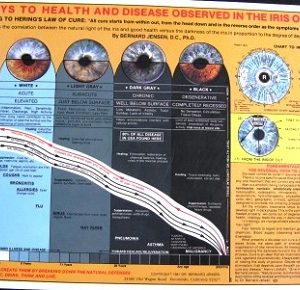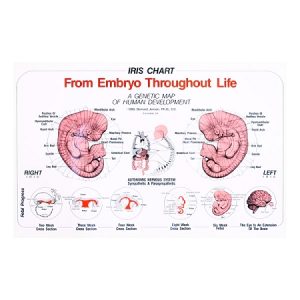Description
The Autonomic Nerve Chart shows each of the spinal vertebrae, pictured and numbered from C1 to S4. Lines representing nerves are shown, connecting each vertebra to the corresponding body parts. A clear division is made in the autonomic nervous system between the sympathetic and parasympathetic systems.
The Autonomic Nerve Chart is 11″ x 17″. It is laminated by Bernard Jensen, DC, Ph.D., ND.
What is The autonomic nervous system (ANS)
The autonomic nervous system (ANS) is a division of the peripheral nervous system that controls involuntary bodily functions, including heart rate, digestion, respiratory rate, pupillary response, and other processes. It operates unconsciously and regulates the internal organs to maintain homeostasis and respond to stress.
The autonomic nervous system is divided into two main branches:
- Sympathetic Nervous System (SNS): Often referred to as the “fight or flight” system, the sympathetic nervous system is activated in response to stress or danger. It prepares the body for a quick reaction by increasing heart rate and dilating pupils. Redirecting blood flow to muscles and inhibiting non-essential functions like digestion can also result.
- Parasympathetic Nervous System (PNS): Often called the “rest and digest” system, the parasympathetic nervous system is activated during periods of relaxation. It slows down heart rate, constricts pupils, promotes digestion, and conserves energy.




